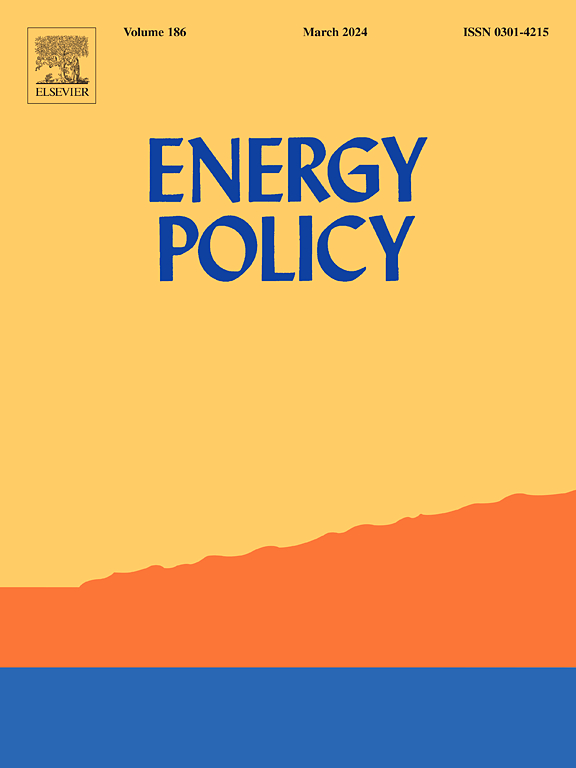探索能源项目第三方市场合作模式:应对气候变化的战略路径
IF 9.2
2区 经济学
Q1 ECONOMICS
引用次数: 0
摘要
选择合适的第三方市场合作模式,实现碳中和,是确保能源可持续发展的关键。基于微分博弈论,构建了涉及中资企业、外资企业和东道国企业的动态减排决策模型。对比分析了基准模式、纵向激励模式、横向联盟模式和一体化模式下各参与方的减排轨迹。结果表明:在不同情景下,能源项目碳减排最优轨迹随时间动态增加,趋于稳定;一体化模式下的碳减排量优于横向联盟模式下的碳减排量。只有当东道国的成本优惠比超过最大阈值时,纵向激励模式下的减排量才能超过综合激励模式。垂直激励模式可以在一定程度上实现帕累托改进,但只有综合激励模式才能同时实现减排努力、项目减排量和项目整体利润的最大化,实现完美的帕累托最优解。本研究为完善能源项目第三方市场合作模式,促进能源减排提供决策依据。本文章由计算机程序翻译,如有差异,请以英文原文为准。
Exploring modes of third-party market cooperation in energy projects: A strategic approach to addressing climate change
Choosing the right third-party market cooperation mode to achieve carbon neutrality is essential for ensuring sustainable energy development. Based on differential game theory, this study constructs a dynamic emission reduction decision model involving Chinese-funded enterprises, foreign-funded enterprises, and host-country enterprises. It compares and analyzes the emission reduction trajectories of each participant under the benchmark mode, vertical incentive mode, horizontal alliance mode, and integrated mode. The results indicate that the optimal trajectory of carbon emission reduction for energy projects dynamically increases over time before stabilizing under different scenarios. The carbon emission reduction volume achieved under the integrated mode is superior to that under the horizontal alliance mode. Only when the host country's cost preferential ratio exceeds the maximum threshold can the emission reduction volume under the vertical incentive mode surpass that of the integrated mode. The vertical incentive mode can achieve Pareto improvement to a certain extent, but only the integrated mode can simultaneously maximize the emission reduction effort, the project's reduction volume, and the project's overall profit, achieving a perfect Pareto optimal solution. This study provides a decision-making basis for improving third-party market cooperation modes in energy projects and promoting energy emission reduction.
求助全文
通过发布文献求助,成功后即可免费获取论文全文。
去求助
来源期刊

Energy Policy
管理科学-环境科学
CiteScore
17.30
自引率
5.60%
发文量
540
审稿时长
7.9 months
期刊介绍:
Energy policy is the manner in which a given entity (often governmental) has decided to address issues of energy development including energy conversion, distribution and use as well as reduction of greenhouse gas emissions in order to contribute to climate change mitigation. The attributes of energy policy may include legislation, international treaties, incentives to investment, guidelines for energy conservation, taxation and other public policy techniques.
Energy policy is closely related to climate change policy because totalled worldwide the energy sector emits more greenhouse gas than other sectors.
 求助内容:
求助内容: 应助结果提醒方式:
应助结果提醒方式:


